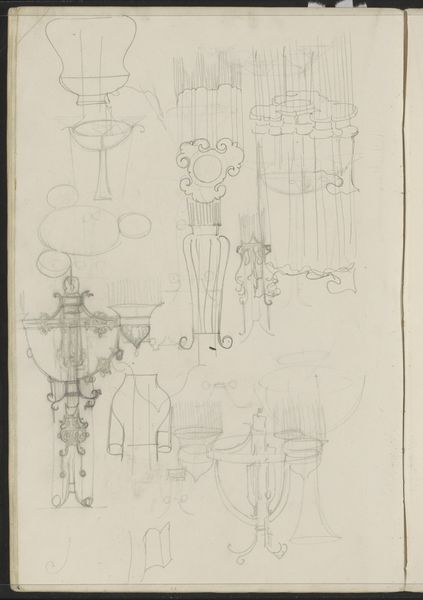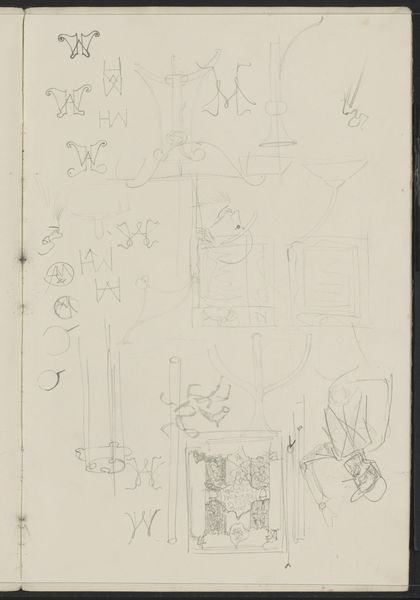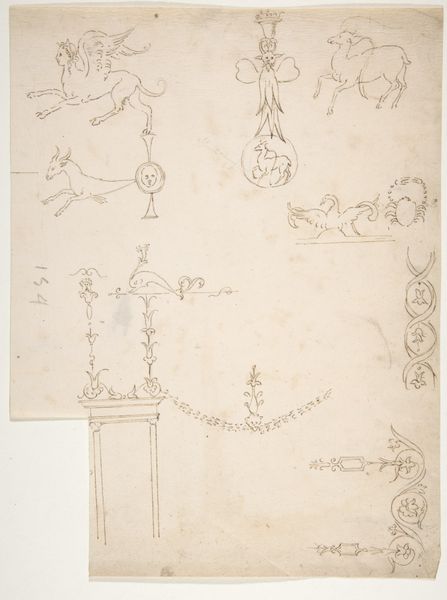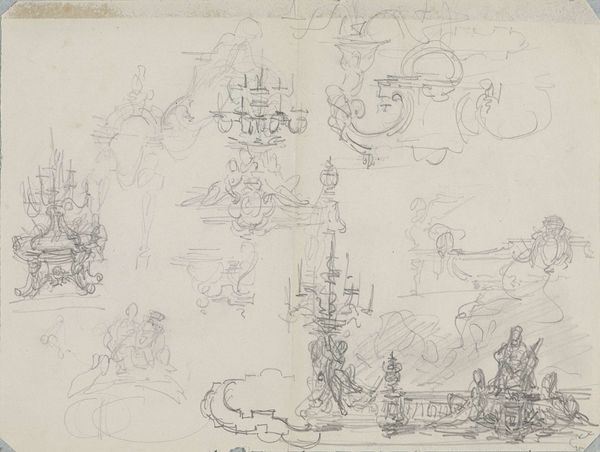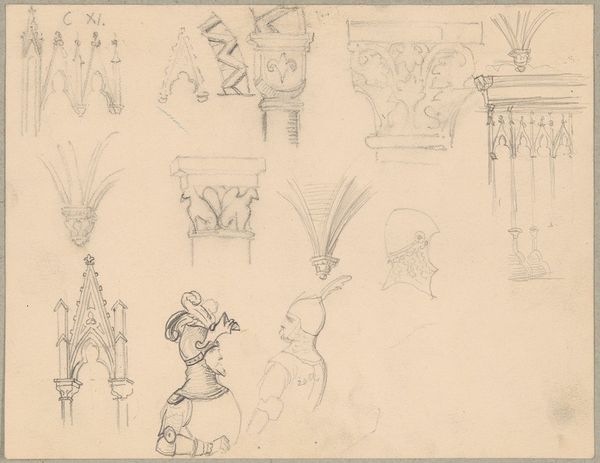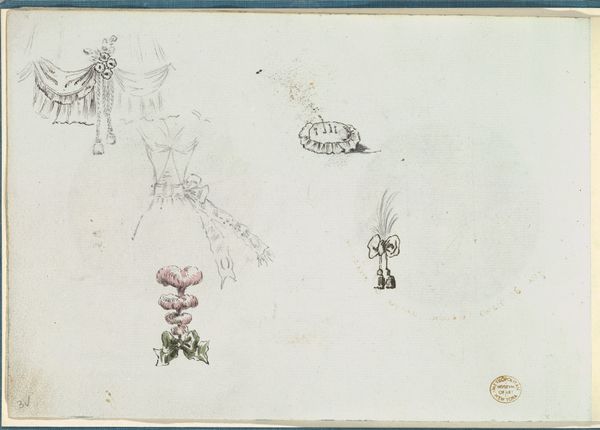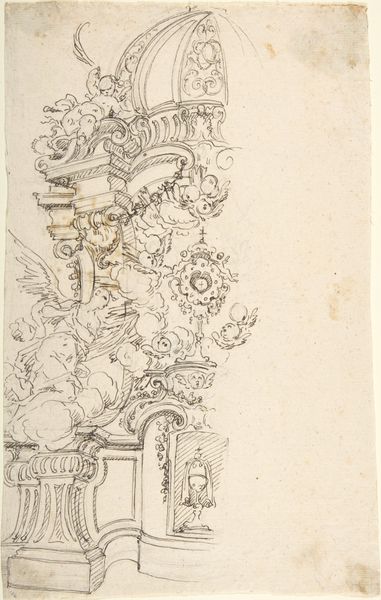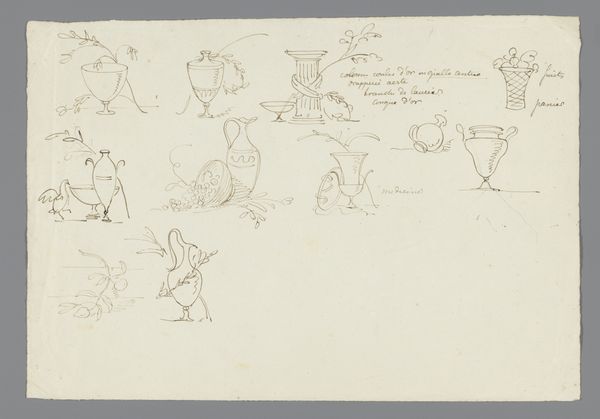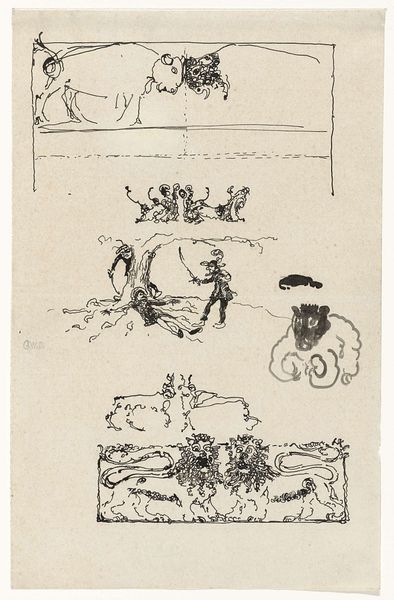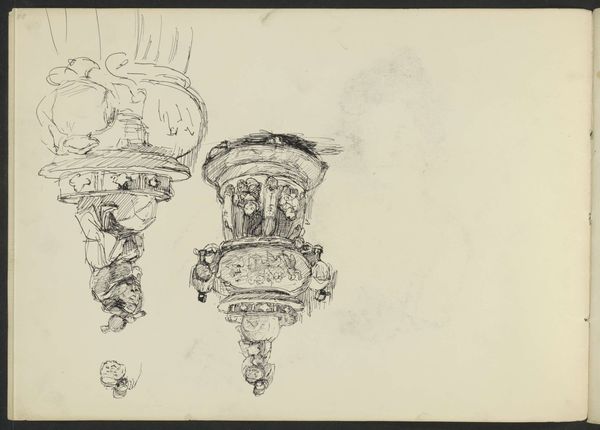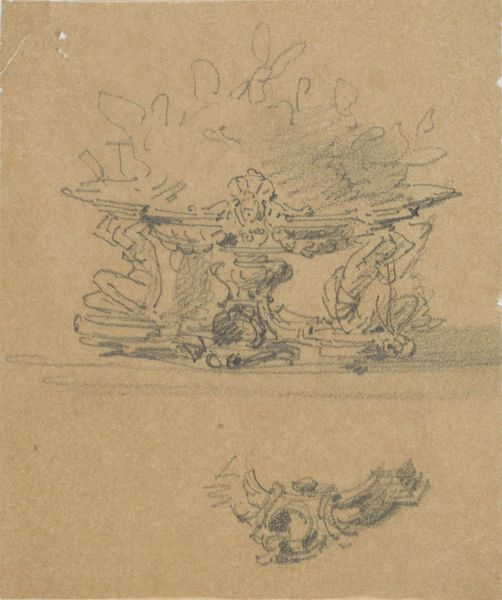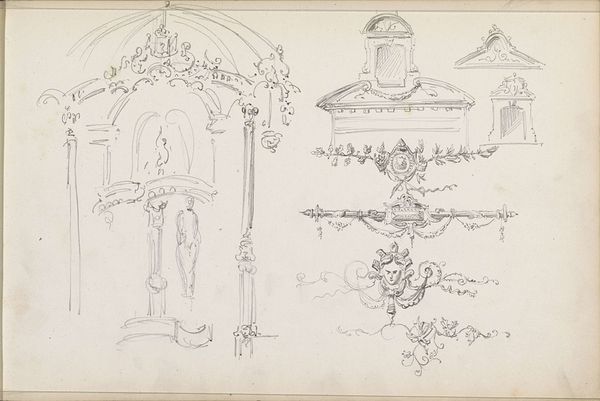
drawing, pencil
#
drawing
#
pencil
Dimensions: height 220 mm, width 194 mm
Copyright: Rijks Museum: Open Domain
Curator: The first impression is one of lightness, almost fragility. It feels like catching a fleeting thought before it fully forms. Editor: We’re looking at “Ontwerp voor onderdelen van kandelabers en vazen,” or “Design for parts of candlesticks and vases,” a pencil drawing by Henri Cameré, dating from around 1864 to 1894. These are sketches, initial ideas captured on paper. And thinking about that moment of creation is interesting given Cameré’s status as an industrial artist working in the second half of the nineteenth century in the Netherlands. Curator: Yes, the act of design itself becomes visible. I’m particularly struck by the repetition of forms – the scrolls, the acanthus leaves – recurring across the sheet, hinting at the visual vocabulary that was prevalent in designs of that period. A lexicon of grandeur, one might argue, aimed at expressing and embodying social status. Editor: Absolutely. Those motifs speak of power, echoing classical and baroque aesthetics, but applied in an industrial context. The symbolism here is compelling. Think of the candle as a signifier of light, knowledge, even domestic comfort, presented within these elaborate, almost performative structures. It speaks volumes about the aspirations of the era and what these domestic objects represented. The designs feature vases as well as candlesticks so also consider how integral flower arrangements were to nineteenth-century rituals of presentation, which made vases potent symbolic vessels in middle class society. Curator: And the contrast with the medium itself – a humble pencil sketch – is striking. It's a democratic medium depicting emblems of privilege. How do you read that tension? I think it speaks to the broader social and economic shifts happening in that period. While design is embracing accessibility, class distinction persists. Editor: That’s perceptive. The sketch also highlights the evolution of design itself. We are peering into a workshop moment, where utility meets artistry. Curator: Exactly! The drawing offers a window into a pivotal moment. These aren't just designs; they are documents of a negotiation between societal values and artistic expression, mediated by the evolving industrial landscape. Editor: Ultimately, Cameré provides the opportunity to trace how aesthetics helped to shape our experience, not just in the 19th Century but for years afterwards.
Comments
No comments
Be the first to comment and join the conversation on the ultimate creative platform.
